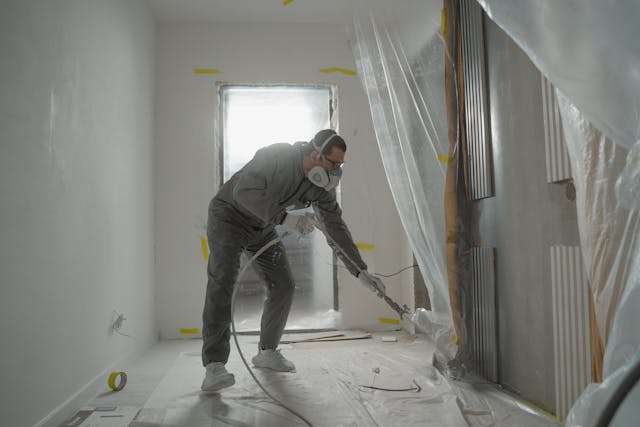
There are many reasons why people choose to downsize their homes.
Retired people may find that a smaller home is easier to keep up and better fits their needs as they age.
Some people may downsize to save on living costs like mortgages, property taxes, utilities, and repairs.
Some people decide to downsize because their lives have changed, like when their kids move out and leave the nest empty and no longer need as much room.
Whether you have parents considering downsizing their homes or you are thinking about it yourself, there is a lot to consider before making the transition.
The boomer population is on the search for downsizing their living spaces.
While most of these boomers have lived in their current homes for decades, the decision to downsize can be an emotional process of immense proportion.
It takes a commitment and a team of support to undertake a big task such as this.
For it’s not just a transaction for most seniors. It’s their HOME, a place where they have raised their families and grandchildren visit.
It is the place they are most comfortable with, and the memories that fill those homes are irreplaceable. (1)

There are many good things about downsizing.
In terms of money, it can free up equity stuck in a bigger home, giving you more money for savings or retirement.
A smaller home may also have lower energy bills, less furniture, and fewer things that need to be maintained.
This means you can spend less time on maintenance and more time on hobbies, travel, or relaxing.
In terms of the environment, a smaller home usually has a smaller carbon footprint because it uses less energy.
Even though there are perks, downsizing can also be challenging.
Sorting through and getting rid of things can be hard on the emotions and take a lot of time.
It can take time to decide what to keep and get rid of, especially when it comes to sentimental things.
Additionally, finding a smaller home that fits your wants and tastes in some real estate markets may be challenging.
Moving into a smaller home can be an extensive choice, but it can save you money, make your life easier, and lower your maintenance needs.
It can be hard to sell your present home and find a new, smaller one simultaneously.
To help you through the process of downsizing your Denver home, here is a complete step-by-step plan.
Different personal, financial, and living goals can lead people to downsize, which means moving to a smaller home.
When people decide to downsize, they often want to achieve the following:

Getting Costs Down: One of the main reasons people downsize is to save Money on living costs. Mortgages, property taxes, insurance, and utility bills are usually less for smaller homes.
Getting people to save more: You can invest the extra Money you get when you sell a bigger house, save it for retirement, or use it to pay off your bills.
Easier Maintenance: Smaller homes need less maintenance, which is excellent for people who want to spend less time on daily tasks and maintenance.
The freedom to travel: Many people who downsize find it easier to travel now that they have less to worry about at home.
A smaller home might also be safer and easier to care for when you’re not there long.
Accessibility and Convenience: As people age, many downsize to more accessible places. Homes with one story or fewer stairs can be more accessible to get around in.

Empty Nesters: Big family homes aren’t needed as much as they used to be as kids move out and become adults.
Downsizing can better meet the needs of empty nesters and cut down on the costs and room that come with having too much stuff.
Planning for retirement: As part of their plan to retire, many people downsize to live efficiently on a fixed income while still enjoying the equity in their more prominent home.
Making Life Easier: A smaller home can mean fewer things to store and a more straightforward, better-organized place to live, which can help you feel less stressed and have more mental room.
Paying Attention to What Matters: By eliminating the duties and distractions of keeping a bigger home, downsizing can help people focus on what’s most important in their lives, like hobbies, relationships, or health.

Moving to Places, People Want: People who downsize may be able to move to better or more handy areas that they wouldn’t have been able to afford with a bigger home.
How close you are to family and friends: Many people find that moving lets them live closer to family, friends, or services they need, which makes their social and support networks stronger.
When you downsize, you have to get rid of things that won’t fit in your new home.
Clear out each room and get rid of personal things.
This not only helps you move, but it also makes your house more buyable.

Fix any problems you can see, like taps that leak, cracked tiles, or paint that is peeling off.
Making these minor fixes can make your home much more marketable.
Staging your home helps cash home buyers in Denver interested in buying it and picture themselves living there.
You could hire a professional stager or look online for do-it-yourself instructions.
Focus on making the space clean and friendly.
First impressions are essential. Ensure you take care of your yard and consider making manageable changes, like adding new mulch, trimming your bushes, or getting a new mailbox or house number.
Look at recently sold homes in your area similar to your home.
A real estate agent in Denver, CO, who knows the market well can give you a comparative market analysis (CMA) and help you set a fair price for your home.
An official appraisal can help you in talks because it gives you a more accurate idea of how much your home is worth.
You can market your home using the Multiple Listing Service (MLS), open houses, and web listings. You can also list it with a real estate agent.

If you need to sell fast, you should consider a Sell My House Fast Denver firm that is willing to pay cash.
Companies that buy with money, like those in Denver, can make deals quickly and easily without fixing the house or staging it first.
You can save money on agent fees by selling your home, but it takes more work and skill in marketing and negotiating.
More people buy when the pictures are good. Consider hiring a professional shooter to show off the best parts of your home.

Put your listings on well-known real estate websites and social media sites. Write an exciting explanation showing your home’s best features and advantages.
Hold open houses and be flexible with showing times so that buyers can come when it works best for them.
During these times, ensure your home is clean and ready for guests.

Read all of the deals carefully. Think about more than just the price.
Consider the terms, conditions, and how the buyer will pay.
If the first offers don’t meet your needs, feel free to make counteroffers.
Cash buyers including We Buy Houses Denver firms are willing to negotiate.
You can get the best deal possible if you know how to negotiate.
When you find a reasonable offer, you should officially accept it.
Prepare for the next steps, including appraisals, inspections, and closing talks.

Buyers may ask for a home inspection.
If there are requests for repairs or renegotiations after the review, be ready.
The lender will want to evaluate whether the buyer gets a loan for the house.
Ensure your home is in great shape to meet the agreed-upon sale price.
The buyer will do one last tour of the house before closing to ensure that everything has stayed the same since the offer was accepted.
Review all the paperwork, and on the day of the closing, sign it.
You’ll get the money from a sell my house fast Arvada CO cash buyer once everything is finished.

Find a moving company with a good reputation and hire them. To make sure your move goes smoothly, get quotes and read reviews.
Start getting ready for packing early. Put things into four groups: keep, give, sell, and throw away. Labeling boxes will make it easier to unpack when you get to your new home.
Set up the moving or canceling of utilities and services. Tell the post office, banks, insurance companies, and other important people about your new location.
Visit your new home as early as possible before moving day to clean and make any other preparations that need to be made. The change will be easier.

Get the most important things first to live in your new home immediately.
Unpack the rest slowly and take your time getting it in order.
Get to know the area around your new home.
Find things to do in the area, like grocery shops, parks, and medical facilities.
Give yourself time to get used to your new, smaller home.
It may take a while to get used to having less room, but keep your mind on the good things about downsizing.

The process of downsizing can be stressful, but starting early and having a clear plan can make it a lot easier.
Start by creating a plan with essential dates, like when to begin sorting through your things, when to arrange for donations to be picked up, and when to start packing.
This schedule will help you stay on track and calm down at the last minute.
Additionally, think about the type of new space you’ll be moving into and its unique needs.
You can decide what to keep and get rid of by knowing the size and plan of the house you want to buy.
Picking what to keep and what to throw away is one of the most complex parts of shrinking.
First, remove the things that aren’t very important to you and then move on to the harder ones.
Follow the “one-year rule”: if you haven’t used something in a year, you probably don’t need it anymore.
Things that don’t serve you anymore should be given away, sold, or recycled. Not only does this reduce the amount of stuff you have to move, but it also makes you feel good and relieved.
It would help if you planned to make the most of your new, smaller room once you’ve removed some of your things.
Buy furniture that can be used for more than one thing, like a sofa bed or an eating table with storage spaces, to get the most out of your money.
To make room on the floor, use vertical storage options like shelves and racks that you can put on the wall.
Find creative ways to store things to keep your new home feeling more open, relaxed, and clutter-free.
As part of downsizing, people often have to give up things that are personally important to them.
It might be easier to go through this process if you keep memories online.
You can make digital copies of photos, letters, and important papers that don’t take up any room by scanning them.
You can keep essential memories close by making digital picture albums or scrapbooks.
In this way, you can keep the vital parts of these things without making room for them in your new home.
If the thought of shrinking makes you feel too stressed, don’t be afraid to get help from a professional.
Professional organizers help eliminate clutter and make the most of their room.
They can give you good advice and help you look through your things.
Hiring a moving company specializing in shrinking can also make things easier on the body and the mind.
Professionals can make the process go more quickly and easily so you can focus on how you feel during the change.
It’s not enough to move to a smaller place; you also have to be open to a new way of life.
Be open to new situations and have a positive attitude about this change.
Think about the good things about downsizing, like less upkeep, lower energy bills, and the chance to live a simpler life.
If you are open to change, you can make moving a good experience that brings new chances and a new way of looking at life.
Having family and friends help with the downsizing process can be very emotionally and practically helpful.
They can help you look through your things, advise what to keep, and help you move and pack.
Sharing the process with people you care about can also turn something that could be upsetting into a chance to get closer.
Their help and presence can make the change more accessible and more fun.
When you downsize, you have to eliminate some things, but it’s also a chance to think about what you will need in the future.
Think about how you want to live in your new house and how you currently live.
Make plans for fun things to do, hobbies, and social events.
You can make your living place better for you by thinking about how it will help you reach your future goals and enjoy the things you like.
Downsizing your home is a process that needs to be carefully planned and carried out.
If you do these things, you can make the move go smoothly, get the most out of your current home’s value, and find a new place that fits your wants better.
Whether you work with a real estate agent, sell to a cash buyer, or do it all yourself, this guide will show you the steps you need to take to move to Denver, CO.
@ 2024 Chris Curry. All Right Reserved